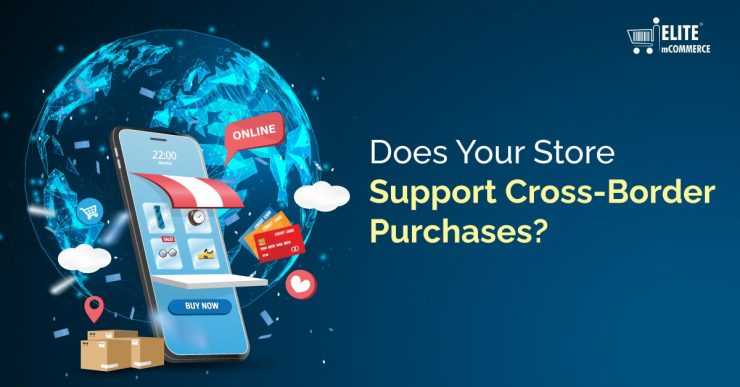The pandemic has caused eCommerce to grow rapidly in all retail sectors, but one trend that stands out is a rise in cross-border sales that bring goods across national borders to their customers. eCommerce brands often focus on the market for their products in their own country for practical reasons, but it’s becoming more and more common to make sales in other countries, making it essential to support cross-border commerce. This is a trend to watch as the pandemic continues to impact eCommerce and afterward.
The Trend in Cross-Border Sales
Worldwide cross-border sales increased 21% from January 1 to July 14 2020 compared to the previous year, according to Global-e’s order and shipping data. US year-over-year cross-border sales rose by 42% in May alone. In general, US-based brands have found many new opportunities in foreign markets over the last year. Tommy Kelly of eShopWorld reported that their data showed that US apparel sales in June 2020 rose 121%, footwear was up 122%, and overall digital sales to international customers were up 106% in early June. Meanwhile, in Europe, cross-border sales made up 26% of total sales, and the value of those sales rose 35% in 2020, with the coronavirus’s impact cited as the main cause by CBCommerce. The rise has been steady over the past few years, but now cross-border sales are a major source of revenue for many digital and omnichannel brands.
An eShopWorld survey for their Global Voices 2021 report found that 68% of people purchased something online from another country in 2020. Younger generations were more likely to make international purchases, with 40% of millennials have made purchases compared to 25% of Generation X and 17% of Boomers. Millennials were also the biggest group of large spenders, with 47% of millennials have made over $500 in purchases compared to 27% of Generation X, along with 15% of Generation Z despite their lower purchasing power. Direct-to-consumer brands do well internationally in addition to marketplace sales from sites like Amazon and eBay and large department store brands.
Read also: Make the Most out of eCommerce with Bundling Strategies
The Issues Facing Cross-Border Sales on e-commerce
Cross-border sales have posed challenges for brands in the past. Shipping is likely to cost significantly more and have more difficulties in reaching the customer. Shipping costs were a factor that might prevent cross-border ordering to 41% of customers in the Global Voices survey, and the length of shipping was cited by 38%. When customers make international purchases anyway, they are often getting products they couldn’t get locally or are seeking greater variety. The pandemic led to shortages in local goods and restrictions on travel, as well as demand for niche products that could only be purchased from foreign countries, boosting the usage of cross-border shipping.
Customers are also discouraged from cross-border purchases for other reasons, such as difficulty navigating sites in foreign languages and making purchases in other currencies. This is less of an issue for younger customers than for baby boomers, with 43% preferring websites in their own language compared to 31% of under-40s.
How to Support Cross-Border Sales on e-commerce
Digital brands, especially those dealing in popular cross-border categories such as clothing, personal care, and luxuries, should do their best to support their growing international customer base. One major concern is providing affordable shipping options. International customers understand that shipping won’t be competitive with local options, but it should still be viable based on the value of the product they’ll be getting. Initial international sales can be a pathway to determining whether there is a need to expand into that country by stocking products in a local fulfillment center.
Support for multiple languages and currencies can be supported by eCommerce platforms. Multi-currency options can display prices in the customer’s preferred currency and administrators can reset and adjust exchange rates. Language selection for interface elements makes browsing much easier even if product details such as descriptions are left untranslated. Localized versions of stores can track customers based on their location to tell them if shipping is available, which is hugely important if customers might assume a foreign store can’t deliver to them by default.
Supporting multiple payment options is also useful as many younger customers prefer electronic payment methods. The Global Voices survey shows that 23% of cross-border shoppers use e-wallets and online payment options such as Paypal, Apple Pay, etc., while only 12% of general consumers do so, and 22% use bank transfer vs. 12% of general consumers.
In addition to making your eCommerce platform friendly to international customers, don’t forget to research and understand what makes your products desirable to foreign buyers despite the higher costs and logistical problems. As cross-border sales grow, it’s clear that shoppers are willing to buy, provided your store can offer what they can’t get anywhere else.









Add comment